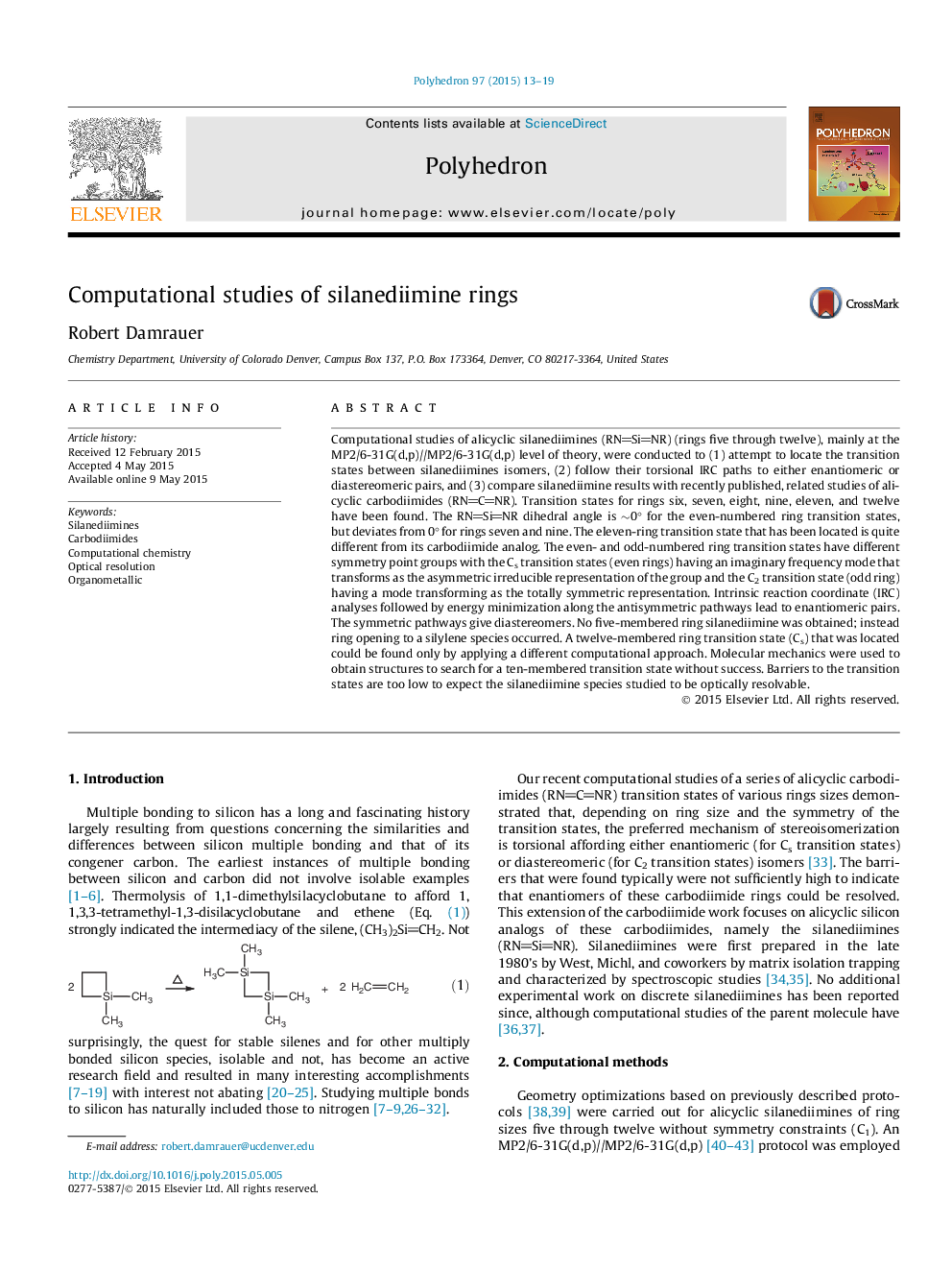| کد مقاله | کد نشریه | سال انتشار | مقاله انگلیسی | نسخه تمام متن |
|---|---|---|---|---|
| 1335185 | 1500242 | 2015 | 7 صفحه PDF | دانلود رایگان |
Computational studies of alicyclic silanediimines (RNSiNR) (rings five through twelve), mainly at the MP2/6-31G(d,p)//MP2/6-31G(d,p) level of theory, were conducted to (1) attempt to locate the transition states between silanediimines isomers, (2) follow their torsional IRC paths to either enantiomeric or diastereomeric pairs, and (3) compare silanediimine results with recently published, related studies of alicyclic carbodiimides (RNCNR). Transition states for rings six, seven, eight, nine, eleven, and twelve have been found. The RNSiNR dihedral angle is ∼0° for the even-numbered ring transition states, but deviates from 0° for rings seven and nine. The eleven-ring transition state that has been located is quite different from its carbodiimide analog. The even- and odd-numbered ring transition states have different symmetry point groups with the Cs transition states (even rings) having an imaginary frequency mode that transforms as the asymmetric irreducible representation of the group and the C2 transition state (odd ring) having a mode transforming as the totally symmetric representation. Intrinsic reaction coordinate (IRC) analyses followed by energy minimization along the antisymmetric pathways lead to enantiomeric pairs. The symmetric pathways give diastereomers. No five-membered ring silanediimine was obtained; instead ring opening to a silylene species occurred. A twelve-membered ring transition state (Cs) that was located could be found only by applying a different computational approach. Molecular mechanics were used to obtain structures to search for a ten-membered transition state without success. Barriers to the transition states are too low to expect the silanediimine species studied to be optically resolvable.
This paper investigates how a series of alicyclic silanediimine transition states undergo stereoisomerization to either their enantiomeric or diastereomeric pairs. This illustration shows the formation of a enantiomeric pair.Figure optionsDownload as PowerPoint slide
Journal: Polyhedron - Volume 97, 5 September 2015, Pages 13–19
